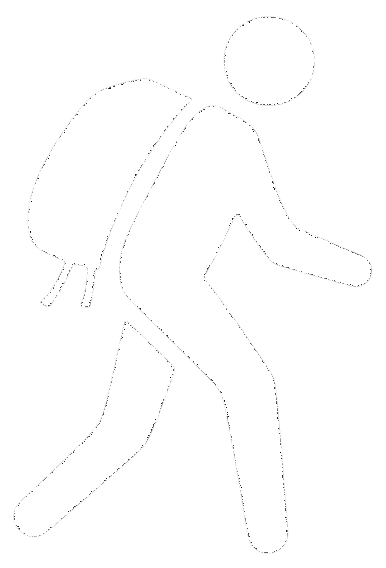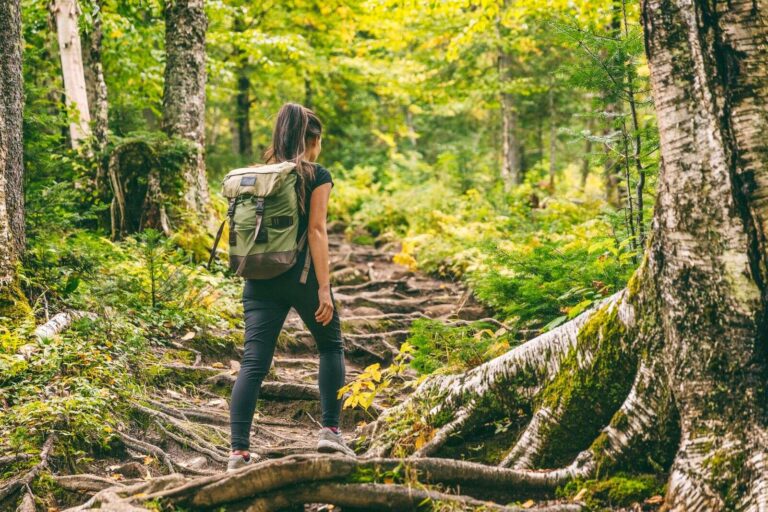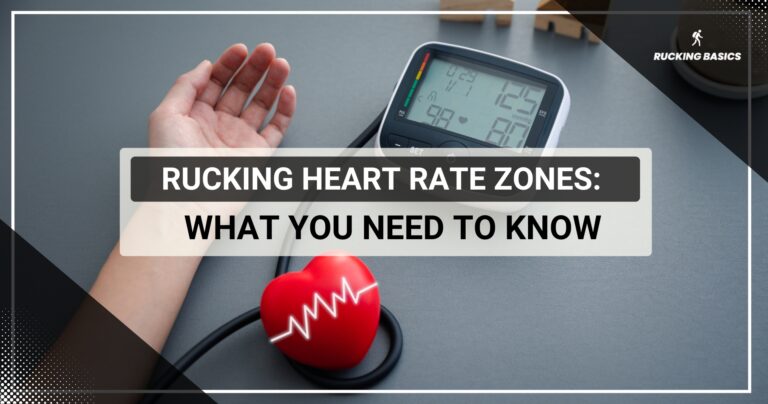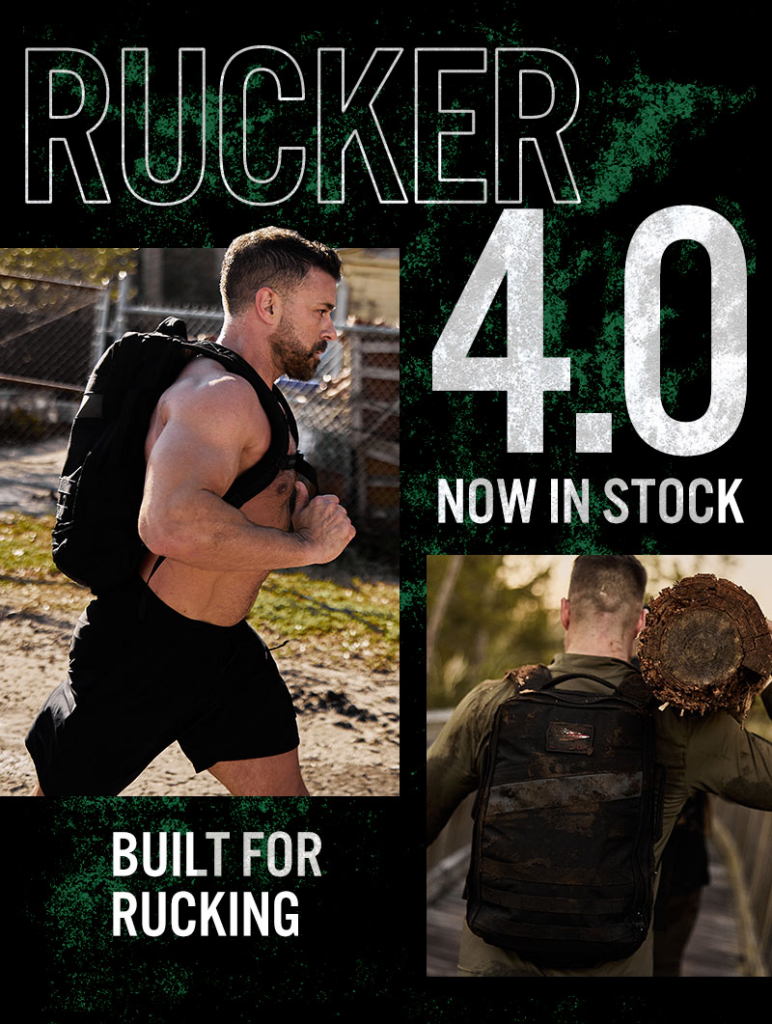In my country, one night mountain climb (called Rtanj night climb) is very popular. This mountain is not too high, around 5000 feet, but it has a distinctive shape (unbelievably reminiscent of a pyramid), which makes climbing rather demanding. I did this night climb with my father once and watching the sunrise from the peak was incredibly rewarding.
Since we carried our backpacks, I realized after this experience that I like rucking at night and started doing it more often. There’s something magical about moving through the dark trail or quiet streets. The cooler temperatures add comfort, and the nighttime atmosphere brings a sense of calm.
The sounds of nocturnal nature or empty city streets amplify adventure and sharpen your awareness, keeping you both excited and calm. It’s a strange feeling I can’t explain completely; you have to try it.
But night rucking isn’t without its challenges. It requires a different approach to gear, safety, and planning. I’ll help you prepare with lighting, reflective gear, and other things.
Planning Your Night Ruck
I always emphasize the importance of planning for rucking, in general, to make everything safe and comfortable. Planning is twice as important when it comes to night rucking.
Choose a Safe and Familiar Route
Sticking to a well-known path is one of the wisest moves for rucking at night. I try new routes during the day, and at night, I choose routes I’ve rucked several times already.
Knowing the twists, turns, and any uneven terrain beforehand allows me to focus on the experience rather than worry about whether I will break my leg.
Consider Distance, Weight, and Time
Night rucking requires pacing yourself differently than during the day. Darkness slows you down because of limited visibility, so your ruck might take longer than usual.
I plan my route considering my expected rucking pace and how long I want to be out, factoring in any additional time for breaks. It’s better to underestimate how far you’ll go and take it slow. Keep in mind that once the sun is down, temperatures can drop faster than expected, so you may also want to pace yourself to stay warm.
Regarding weight, reduce it compared to daytime rucks, just in case. You don’t have to cut the weight you carry in half, but don’t try to break a personal record, either.
Mapping and Navigation
Using offline maps or even a traditional paper map can be a lifesaver at night. You never know where cell service may be lost. I like to load my route onto a GPS app that works offline as a backup. Night rucking can sometimes throw off a sense of direction, so checking in with a map is smart. As a bonus, planning a route with multiple exit points or loops can give you the flexibility to shorten or extend your ruck based on how you feel along the way.
Check the Weather Forecast
Checking the forecast just before you head out is essential to be aware of any sudden shifts in temperature, rain, or wind. I always check for any signs of fog, as fog further reduces visibility, which is already poor at night.
If you’re planning a night ruck in winter, consider strategies for staying comfortable despite the cold. Rucking during colder months requires specific preparation, as low temperatures can make carrying weight more demanding. For practical tips, read more about rucking in cold weather to stay safe and warm. Even in mild climates, the added challenges of the night can amplify how the cold affects your endurance.
Essential Gear for Rucking at Night
This is an activity that does not require a large investment in rucking gear, but you need a few extra pieces of equipment for the night.
Headlamp and Lighting Options
A solid headlamp is a non-negotiable for night rucking. I prefer a headlamp with around 300 lumens—this brightness effectively lights up my path without blinding anyone nearby. If you are ready to spend more money, choose a lamp with adjustable brightness. So you can have a 500-lumen lamp on your head for dark paths and conserve battery life when you don’t need maximum illumination.
I also carry spare batteries and a backup flashlight just in case my primary light fails. Being caught in the dark without a reliable light source can turn a fun night into a stressful situation.
Reflective Gear
I never go anywhere without GORUCK Reflective Ruck Bands. They have up to 1200 feet of nighttime visibility and 360-degree reflective coverage, so you will be seen from multiple angles, which is especially important to any passing vehicles or fellow trail users.
If you’re curious about their effectiveness, this GORUCK Reflective Bands review dives deeper into their key features and why they’re a solid addition to your gear.
The Right Backpack
Most beginners wonder if they can ruck with a normal backpack, and my answer is yes, but I don’t recommend it.
You need one of the best rucksacks for rucking, which can carry the ruck weight, plus other things like water, snacks, and an extra layer. In addition, comfort and weight distribution are significantly different, even if we compare a regular backpack and a rucking backpack. If you are going for a short trail, the GORUCK Training Weight Vest 2.0 is also a very comfortable option.
This applies both to day and night ruck marches. The right backpack should be an extension of your rucking experience, making it easier to focus on the trail ahead rather than your gear.
If you’re looking for a well-designed ruck that balances durability and comfort, check out this Centr Rucksack review.
Weather-Appropriate Clothing
Layering is my best friend when it comes to (night) rucking. I start with moisture-wicking base layers that help manage sweat and prevent chills. Depending on the temperature, I add additional layers and lightweight, wind-resistant outer layers.
You usually need minimal clothing in summer, but don’t let the hot day fool you; it can be very cold at night.
Footwear
For shorter, day rucks, my choice is GORUCK Ballistic Trainers. Sometimes, they serve me for rucking at night when I go on flat terrain, but on other types of terrain, you need the best rucking boots. Boots provide traction and good ankle support, which is of the utmost importance since it’s easy to misstep when visibility is limited.
If you’re curious about the durability and performance of these trainers, check out this GORUCK shoes review. It covers key features like grip and comfort that make them a great option for a variety of conditions.
But if you’re considering boots with exceptional durability and designed for tough conditions, the GORUCK MACV-2 review breaks down their features, which include improved support and a lightweight design that’s perfect for night rucking on uneven trails.
Don’t forget socks and insoles, two often overlooked pieces of equipment that have a huge impact on your feet and overall comfort.
Communication Device
Whether you ruck solo or have company, fully charge your phone, smartwatch and GPS device. It’s crucial for both navigation and safety.
Water and Food
I keep my snacks light and simple—bananas, nuts, or a small protein bar. I avoid heavy foods that can weigh me down or cause stomach discomfort.
Stay hydrated, even if you don’t feel as thirsty, but don’t overdo it. The cooler air makes dehydration less obvious, so I sip water at intervals instead of chugging it all at once.
I prefer using hydration bladders over traditional water bottles because they provide easy access to water without stopping my momentum.
Staying Visible and Safe
One effective way to enhance safety is through light signaling techniques. You can alert others of your presence by signaling with a headlamp. This can be as simple as briefly turning on the brightest setting or using the red-light mode.
Carrying a whistle is a small but vital addition to nighttime rucking gear. It’s lightweight, takes up virtually no space in my pack, and can be a lifesaver. In an emergency, a whistle is a signal that can carry much farther than a shout.
Well-lit trails isolated from traffic provide a much safer environment. However, the risk of animals and people with bad intentions is higher in isolated places. Carry some basic self-defense gear if it’s allowed.
Animals are more active at night, so be mindful of your surroundings. I make a bit of noise while moving to avoid surprising any wildlife. Avoid bringing food that has strong scents, which might attract animals.
Post-Ruck Recovery
Generally, most recovery steps are the same, regardless of the time of day.
Cool down and do stretches to prevent lower back pain and stiffness the next day, focusing on the calves, hamstrings, and back; I take the time to cool down properly.
Then, replenish lost fluids and eat a meal that includes protein and carbohydrates. Don’t eat too much if you plan to sleep afterward.
The most significant difference after a night ruck is adjusting the sleep routine. I typically aim to go to bed earlier the next day to compensate for the physical exertion and lost sleep from being out at night.
Wrapping Up
Stepping into night rucking can seem unnecessarily daunting, but it’s hard to go back once you take on the challenge. Night rucking pushes you to rely on your instincts and planning in a way that daytime rucking doesn’t.
I remember finishing my first nighttime route and feeling accomplished, knowing I’d tested my endurance in new ways—physically, mentally, and even emotionally.
If you’ve prepared well, each night ruck will be something you look forward to. So, take it on with confidence, and it will add a new dimension to your rucking workout.
Frequently Asked Questions (FAQs)
What types of training can help me prepare for night rucking?
Practicing with shorter night walks or low-light hikes is excellent preparation for full night rucking. Strengthening navigation skills, like using a map and compass, is helpful, as well as getting comfortable with your gear in the dark. Familiarity with nighttime conditions will boost both skill and confidence.
Is night rucking suitable for beginners, or should I build up experience first?
Night rucking is doable for beginners, with some preparation and safety measures in place, but I wouldn’t recommend it. First, build a daytime rucking experience. If you still decide to try it, start with a partner or small group and stick to a shorter, well-marked route.
Are there rucking trails that are safer or better suited for nighttime?
Wide, well-maintained trails with clear markers are safest for rucking at night. Choose routes you’re familiar with to avoid surprises and reduce navigation difficulty. Avoid heavily wooded or rugged trails unless you’re experienced with night navigation.
What are common mistakes to avoid when planning a night ruck?
Common mistakes include underestimating the need for light sources, overlooking weather changes, and skipping safety checks like informing someone of your plans. Also, bring more water and snacks than you might for a day ruck.
How can I train for a GORUCK Challenge or any other GORUCK event while improving my fitness level?
Participating in a GORUCK Challenge requires building both physical and mental endurance to reach your goals. Incorporate strength training into your fitness routine to improve core stability and resilience under a weighted pack. Alternate between short-distance rucking to work on speed and long-distance rucks to build stamina. Gradually increase the weight in your rucksack, simulating the load you’ll carry during the event. This progression prepares your body and boosts your confidence for the challenge.
What’s the best way to manage blisters and other foot discomfort during a ruck march or extended hike?
Preventing blisters starts with wearing well-fitted rucking boots, moisture-wicking socks, and using insoles for extra comfort, especially under a heavy load. Break in your gear on short-distance rucks before tackling longer routes. To minimize friction, apply an anti-blister balm or tape trouble spots in advance. If you develop a blister mid-ruck, stop to treat it immediately with proper bandaging to avoid further irritation.
How does using a hydration bladder improve performance during long-distance rucking or hiking?
A hydration bladder offers easy, hands-free access to water, helping you stay hydrated during walking, a ruck march (12 mile ruck) or a hike without disrupting your rhythm. This is particularly useful when carrying a heavy backpack or any heavy stuff, as frequent stops to drink can be tiring. Staying consistently hydrated reduces the risk of fatigue during both shorter distance and long distances.
References
Stutz J, Eiholzer R, Spengler CM. Effects of Evening Exercise on Sleep in Healthy Participants: A Systematic Review and Meta-Analysis. Sports Med. 2019 Feb;49(2):269-287. doi: 10.1007/s40279-018-1015-0. PMID: 30374942.
Alkhaldi EH, Battar S, Alsuwailem SI, Almutairi KS, Alshamari WK, Alkhaldi AH. Effect of Nighttime Exercise on Sleep Quality Among the General Population in Riyadh, Saudi Arabia: A Cross-Sectional Study. Cureus. 2023 Jul 10;15(7):e41638. doi: 10.7759/cureus.41638. PMID: 37565115; PMCID: PMC10411382.








